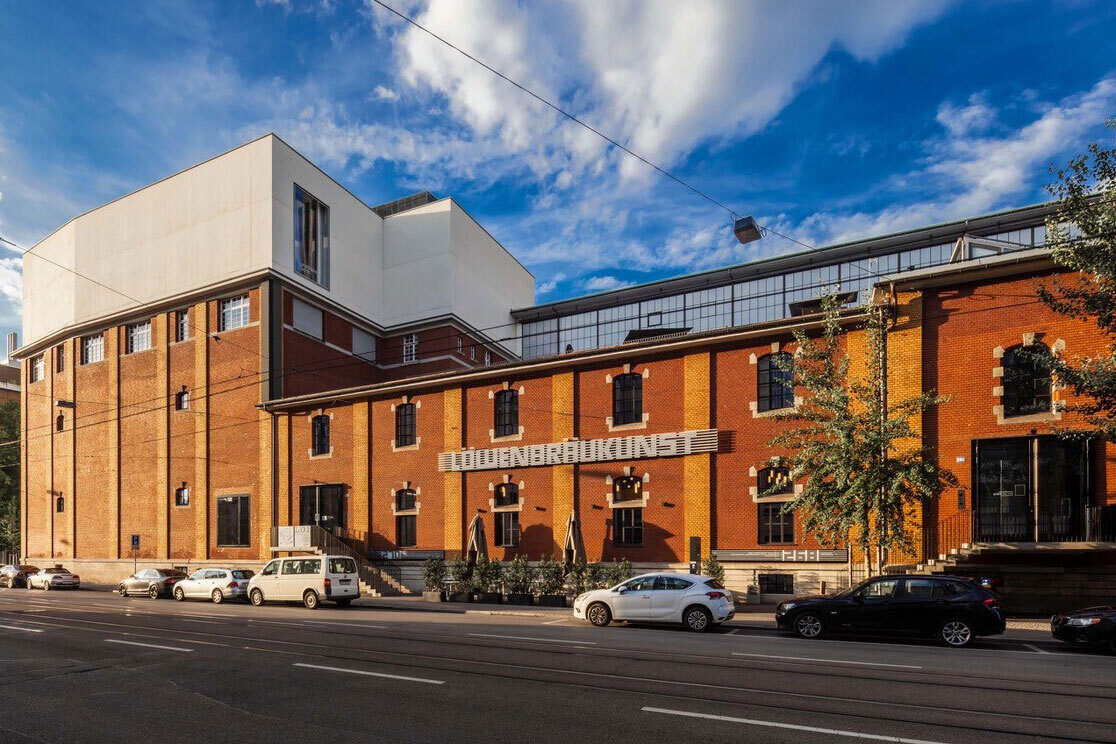About
Museum Haus Konstruktiv is the leading institution for constructive-concrete and conceptual art in Switzerland and enjoys an excellent international reputation.
Shaped by the achievements of the Zurich Concretists — Max Bill, Richard Paul Lohse, Camille Graeser and Verena Loewensberg — during the 1930s to 1950s, this art form has become an integral part of modern art history. Our aim is to keep this artistic legacy alive and to connect it with contemporary artistic practice.
The museum owes its unique position within the cultural landscape to its three to six temporary exhibitions per year, which are conceived according to a clearly defined curatorial programme. Focusing on the connections between the pioneers of constructive-concrete and conceptual art on the one hand, and international contemporary art on the other, these exhibitions bring renowned, as well as newly or rediscovered historical positions into dialogue with current artistic approaches.
The art-historical foundations lie in Russian Constructivism, the constructive-concrete impulses of the 1920s and 1930s in Western Europe – including the Bauhaus – as well as in kinetic art, Op Art and American Minimal Art of the 1960s. Also central is Conceptual Art of the same decade, which emerged from the shared tendency among these movements towards reduction.
A key aim of our exhibitions is to carry this legacy forward into the present, while simultaneously reflecting contemporary artistic concepts in their historical predecessors. This dialogue is usually presented through one or two parallel solo or group exhibitions, in which the intellectual and formal affinities and differences between generations of artists are made clearly visible.

In 2001, after 15 years in Zurich’s Seefeld district, Museum Haus Konstruktiv (formerly haus für konstruktive und konkrete kunst) relocated to the city centre, specifically to the former ewz-Unterwerk Selnau. The move became necessary as the previous premises in Seefeld could no longer meet the growing demands of a contemporary museum operation. In spring 2025, after nearly 25 years at its long-standing location on Selnaustrasse 25, the museum moved for a second time – this time to Löwenbräukunst-Areal at Limmatstrasse 268.
The historically unique building of the ewz-Unterwerk Selnau, which had served for around one hundred years as a converter station supplying electricity to the city until it was decommissioned in 1998, was in architectural harmony with the conceptual focus of our institution. The structure, redesigned between 1930 and 1934 by renowned architect and then-city architect Hermann Herter, is now a listed building. However, the Museum Haus Konstruktiv had to vacate the ewz-Unterwerk Selnau, as a new energy hub will be installed there from 2026 onwards as part of the “CoolCity” energy concept.
The newly renovated spaces in Löwenbräukunst-Areal, designed by Gigon Guyer Partner Architekten, offer excellent conditions for museum operations. In an initial phase, by May 2025, the already
completed section in the eastern part of the building (Limmatstrasse 268) was occupied. It comprises three spacious exhibition rooms, the museum shop, and the new café.
The remaining exhibition spaces, along with the offices in the western part of the complex at Limmatstrasse 270, will be ready for occupancy in spring 2026. The Rockefeller Dining Room, the centrepiece of the museum’s own collection, will once again be open to the public in June 2026 – coinciding with the launch of the first exhibition in the west wing.
The interior design of the spaces in the Löwenbräukunst complex was conceived by Zurich-based architectural practice Fuhrimann/Hächler (AFGH), which had previously designed the café and shop area at the former ewz-Unterwerk Selnau location in 2007 and 2021. Particular emphasis was placed on sustainability: the tables and bistro chairs from the previous café, as well as furniture from the museum shop and reception area, have all been thoughtfully incorporated into the new design.
The Museum Haus Konstruktiv is a place of encounter for everyone, offering a diverse programme and inviting visitors to explore its exhibitions through various educational activities. Inclusion at the museum means ensuring that all people have access to cultural offerings and are empowered in their own abilities and needs through active participation.
The Museum Haus Konstruktiv is particularly committed to ensuring equal access to cultural heritage through its inclusive projects.
Here, you can learn more about the inclusive programmes.
Museum Haus Konstruktiv is committed to sustainability and strives to do as much as it can to help tackle the climate crisis effectively. It conveys this commitment to its staff, as well as to its partners and visitors. In doing so, it follows the guidelines set out in the position paper by the Association of Swiss Art Museums (VSK) and the Happy Museums network.
Building / Preservation
Museum Haus Konstruktiv is only partially air-conditioned and uses green electricity. Wherever possible, it works with regional tradespeople and uses eco-friendly materials for maintenance.
Exhibitions / Collection
Museum Haus Konstruktiv regularly includes artists from Switzerland and Zurich in its program. Here too, we work with regional suppliers and ensure that materials are used in resource-saving ways.
If possible, we arrange combined transportation and seek short transport routes. Sustainability always has high priority in our collaborations with artists.
Management / Café & Shop
Museum Haus Konstruktiv raises its staff’s awareness with regular continuing education and training on the subject of sustainability.
The use of environmentally friendly materials and cooperation with local partners for the administration, café and shop are a matter of course for us.
The Museum Haus Konstruktiv is a member of the Verein Zürcher Museen and is featured on kulturzueri.ch.
Museum Haus Konstruktiv is supported by its patrons, members and
